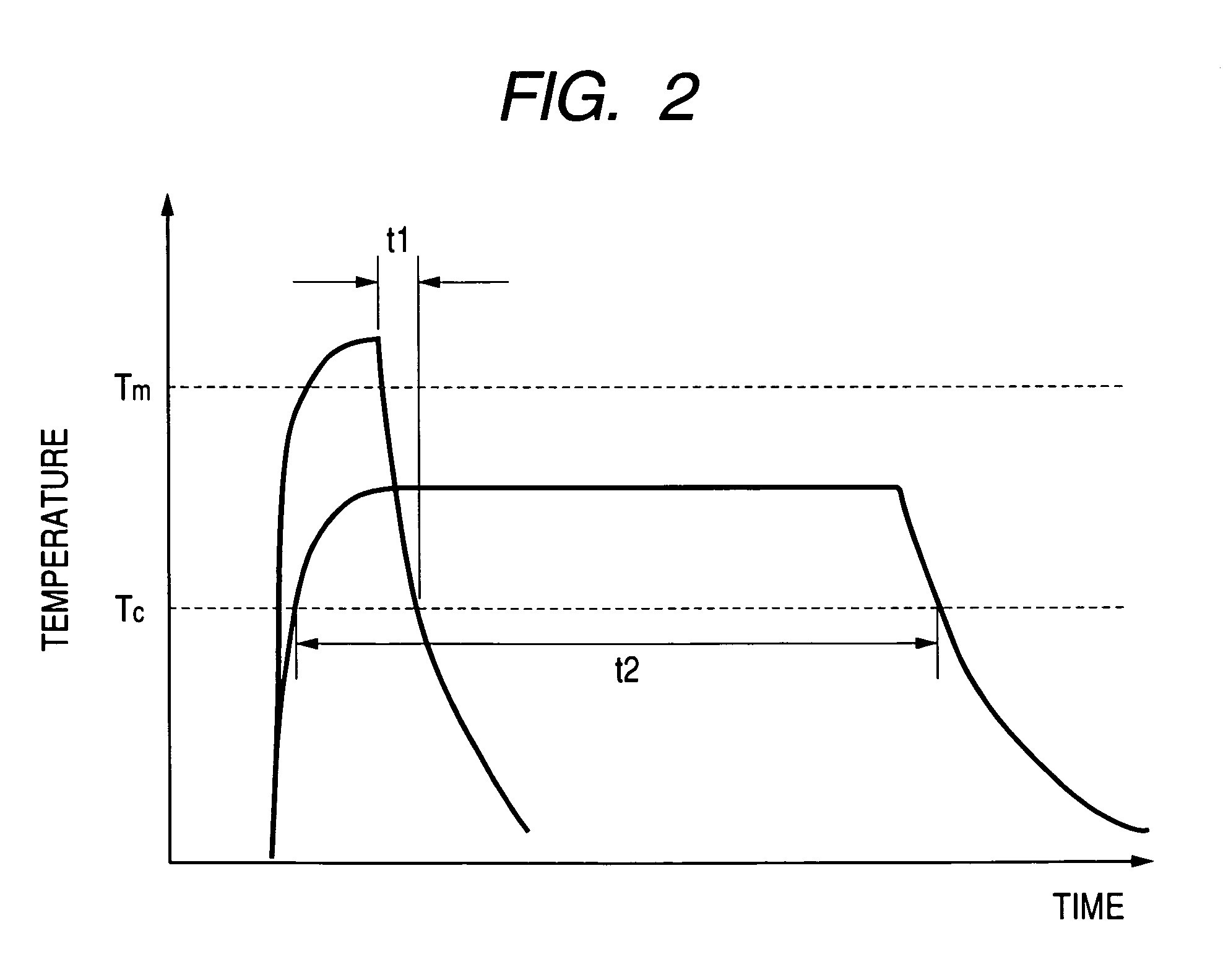Semiconductor integrated circuit device
a technology of integrated circuits and semiconductors, applied in semiconductor devices, digital storage, instruments, etc., can solve the problems of difficult to stably set the phase change memory, difficult to reduce the current, and the phase change portion is overheated, so as to prevent re-amorphization, reduce the resistance of the phase change portion, and increase the current amount
- Summary
- Abstract
- Description
- Claims
- Application Information
AI Technical Summary
Benefits of technology
Problems solved by technology
Method used
Image
Examples
first embodiment
[0028]In this embodiment, how the memory array shown in FIG. 1 operates will be described in detail. A memory cell C is composed of one information storage portion and one selection transistor. The selection transistor is an MIS type transistor. Although only four memory cells are described in FIG. 1, this is because of simplification for showing the problem and the principle of the present invention. Circuit elements which constitute blocks in this embodiment, though not specially limited, are typically formed on such a single semiconductor substrate as a single crystal silicon by a semiconductor integrated circuit technology such as a known CMOS (a complementary MOS transistor). As the material of the information storage portion, there is used a phase change material, especially chalcogenide. A sub-word line driver Y drives eight sub-word lines sWL per piece. Thirty-two sub-word line drivers Y are arranged, while a total of 256 sub-word lines sWL are laid.
[0029]Prior to write, FXB...
second embodiment
[0046]In this embodiment there is proposed a method using a circuit shown in FIG. 8 as a circuit which prevents re-amorphization and is thereby effective in stabilizing the setting operation. This circuit is characterized by comprising current mirror circuits 281 and 282. The current mirror circuit 281 can supply 10 μA current, while the current mirror circuit 282 can supply 100 μA current.
[0047]Before rewrite, FXB, TG, and PRE, are at an increased potential, while FX1, sWL, MWL, and DD, are at the ground potential VSS. The transistors 283 and 284 are OFF. BL is held at the precharge potential Vpre.
[0048]To reset the memory cell C, FXB, PRE, and TG, are deactivated, while FXl and DD are activated. Next, the transistor 284 is turned ON. Then, MWL is activated to set the gate voltage of the selection transistor QM at VDD. With this operation, 100 μA current for heating the phase change portion 211 to above its melting point flows through the phase change portion.
[0049]Of course, a lar...
third embodiment
[0052]In the first embodiment the phase change portion is disposed between the selection transistor and the ground potential, but in this third embodiment a selection transistor is disposed between a phase change portion and the ground potential.
[0053]A cell array of this embodiment is shown in FIG. 9. A peripheral circuit portion is the same as in the first embodiment. A memory cell D comprises a phase change portion PC and a selection transistor QM. In this embodiment, the bias potential of the selection transistor QM can be held at the common line potential VSS, so that a back bias is not imposed on the selection transistor QM and hence the selection transistor can be driven at a low voltage. Besides, since the common line can be laid without using a diffusion layer, the memory cell area can be diminished.
[0054]However, due to the wiring capacity, when the bit line potential varies, a slight amount of current flows also through the phase change portion of the memory cell with the...
PUM
 Login to View More
Login to View More Abstract
Description
Claims
Application Information
 Login to View More
Login to View More - R&D
- Intellectual Property
- Life Sciences
- Materials
- Tech Scout
- Unparalleled Data Quality
- Higher Quality Content
- 60% Fewer Hallucinations
Browse by: Latest US Patents, China's latest patents, Technical Efficacy Thesaurus, Application Domain, Technology Topic, Popular Technical Reports.
© 2025 PatSnap. All rights reserved.Legal|Privacy policy|Modern Slavery Act Transparency Statement|Sitemap|About US| Contact US: help@patsnap.com



